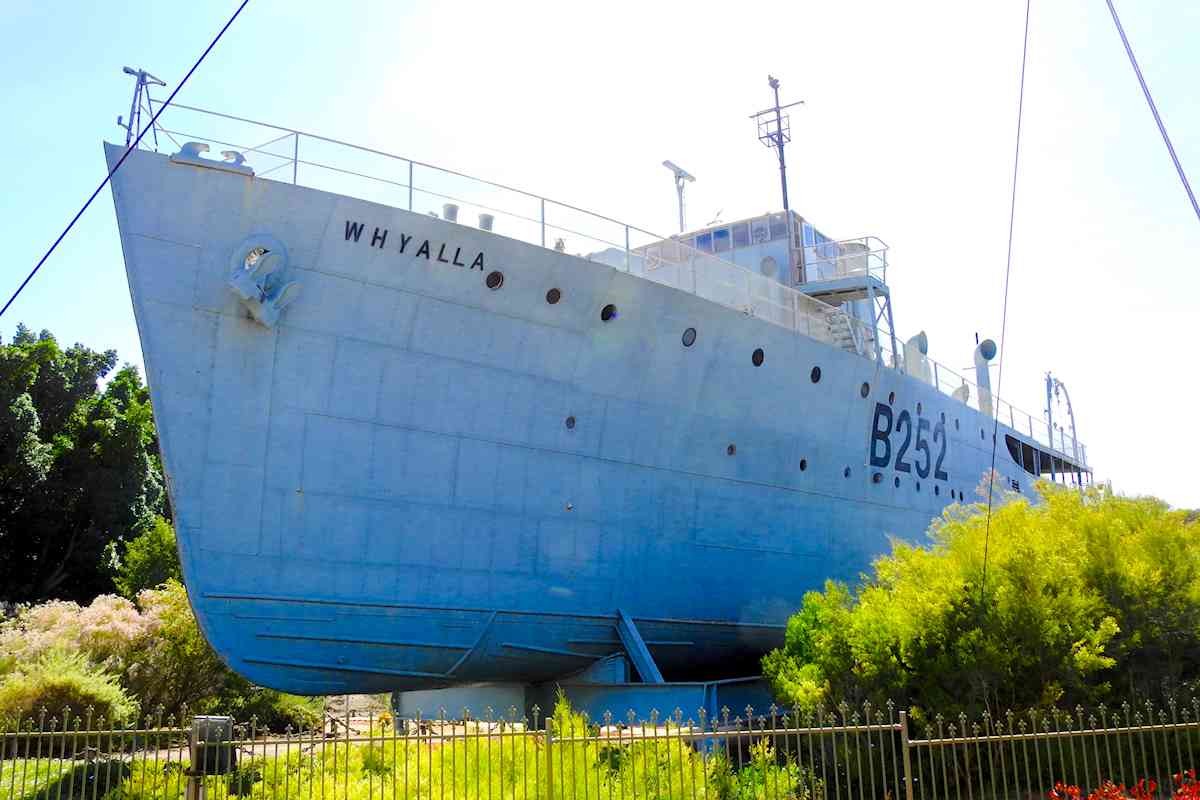I am currently at Ceduna, which is on the north-west coast of the Eyre. It is the last civilised town I will encounter on my journey west, at least until I reach Esperance on the south coast of WA. In between is the vast Nullarbor Plain, which is only serviced by a few remote roadhouses.
Captain Matthew Flinders explored here in the early 1800’s and was accompanied by his travelling companion, Trim the adventure cat. Flinders mapped the coast of South Australia aboard the HMS Investigator.
The Dutch and French had been here before and many coastal landmarks still have French names. The Dutch had also explored the west and northern coasts and of course, Cook did his thing along the east coast.
But at that time, no one really knew how all these bits fitted together. Flinders voyages joined the dots, so to speak, determining all this land was actually one continent. He was also instrumental in naming the continent “Australia”, a name that seems to have stuck.
In the 1840’s, Edward John Eyre did some serious walking around South Australia. As well as discovering that lake that now bears his name, he explored this peninsula, although he was very disappointed in the “barren and arid” land he found.
Many of the places around the coast here have evocative names such as Anxious Bay, Foul Bay (which was actually pretty nice when I was there) and Point Avoid; inland there is Mount Hopeless and Mount Misery. I guess this shows what the early explorers actually thought about this country…
In 1840 Eyre left Adelaide with the intention of finding a route to the west coast. He and his party journeyed to the south coast of WA, which is no mean feat! Eyre’s path is one that I will be roughly following over the next part of my trip and the highway sort of shadows his trail around the cliffs of the Great Australian Bight and then across the Nullarbor Plain. This is a journey I am really looking forward too.
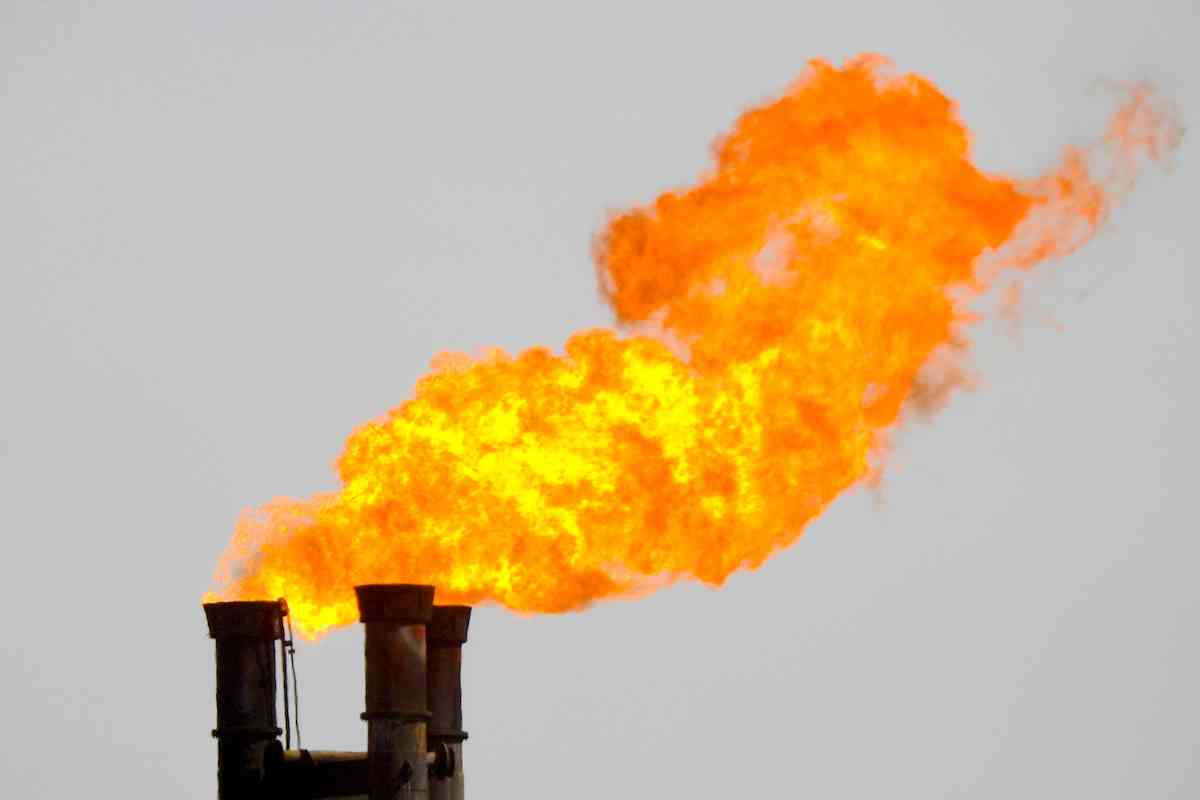
Whyalla, on the eastern side of the Eyre, is a modern industrial town built on iron and steel. During WWII, Whyalla became a major ship building port and in fact, they still have the first ship they built here!

Built in 1941, the former HMAS Whyalla has survived and is now located high and dry, having been moved two kilometres inland from the sea. A guided tour gives you access to this minesweeper and insight into the wartime naval experience.
Only 180 feet long and just 30 feet wide, there wasn’t much room aboard for up to 150 men. The Captain and officers had pretty upmarket cabins, while the rest of the men shared hammocks in very cramped quarters, which doubled as their mess. The galley had no refrigeration, so all meat was salted but there was fresh fish on the menu.
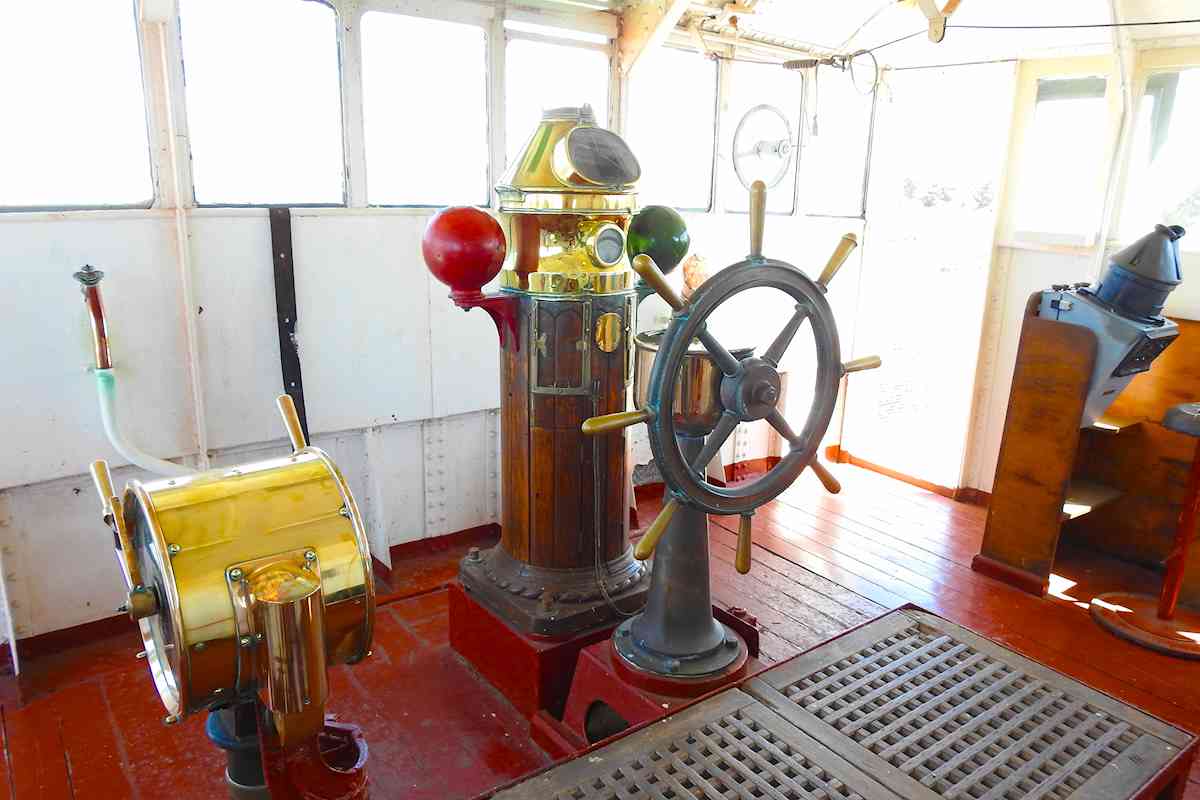
The bridge still has the beautiful brass and polished wood extant. Radar was added in more recent times but this modern equipment appears ugly alongside the original fitout.
Being a minesweeper means the ship has a flat bottom and rode high in the water, very important for floating over mines. But this gave her a very pronounced roll, often up to 40 degrees from the perpendicular, which I imagine would have been very unpleasant to experience.
The shipyards closed in 1978 and there is little evidence still remaining. The site became the local steel works, which now covers a staggering 1,000 hectares; the main products here are railway tracks and steel beams for building.
Because of health and safety, you only can now do a bus tour (apparently years ago you used to be able to get closer). Fortunately, we were lucky enough to be able to see plenty of work going on from the bus, which made the tour quite interesting.
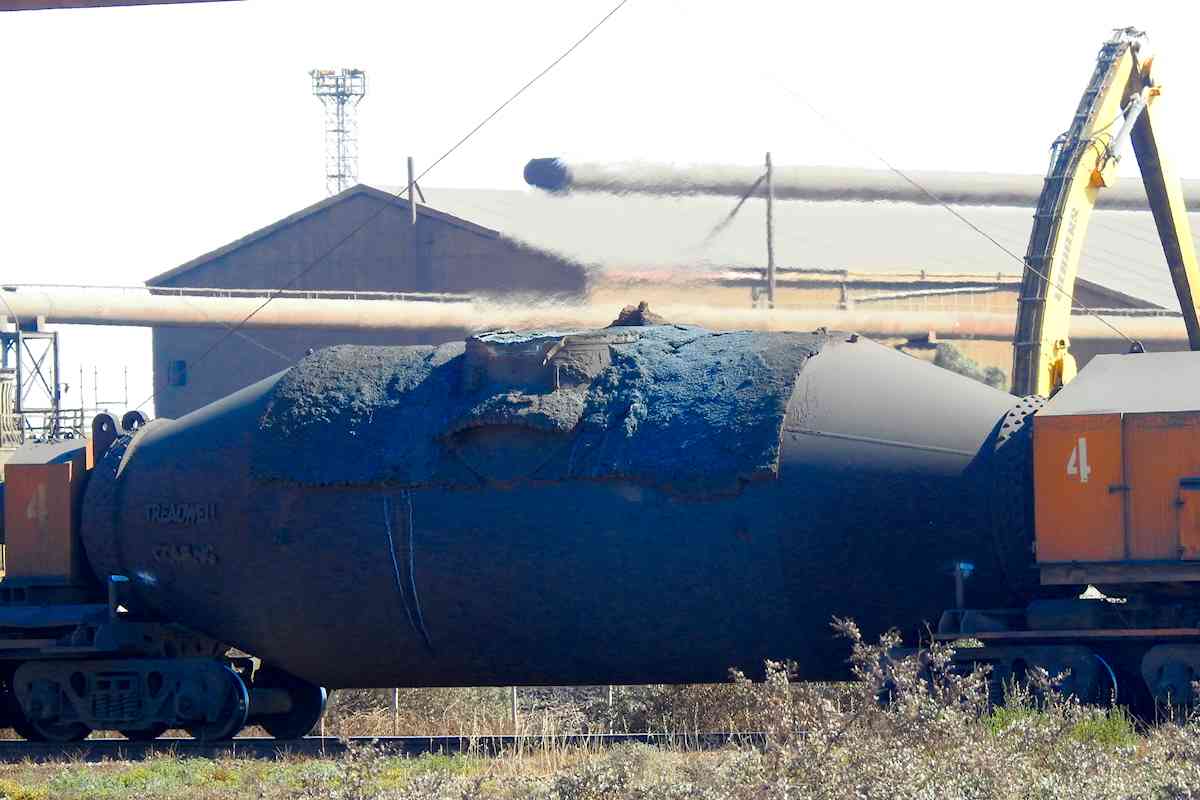
Special railway carriages, called “treadwells” catch the melted iron from the furnace. Each holding 20 tons of molten iron, the amazing heat haze gives an idea of the incredible temperature inside. The iron is then transported to the blast furnace and mixed with other ingredients to make steel; the combinations of these ingredients determining the grade of steel produced.
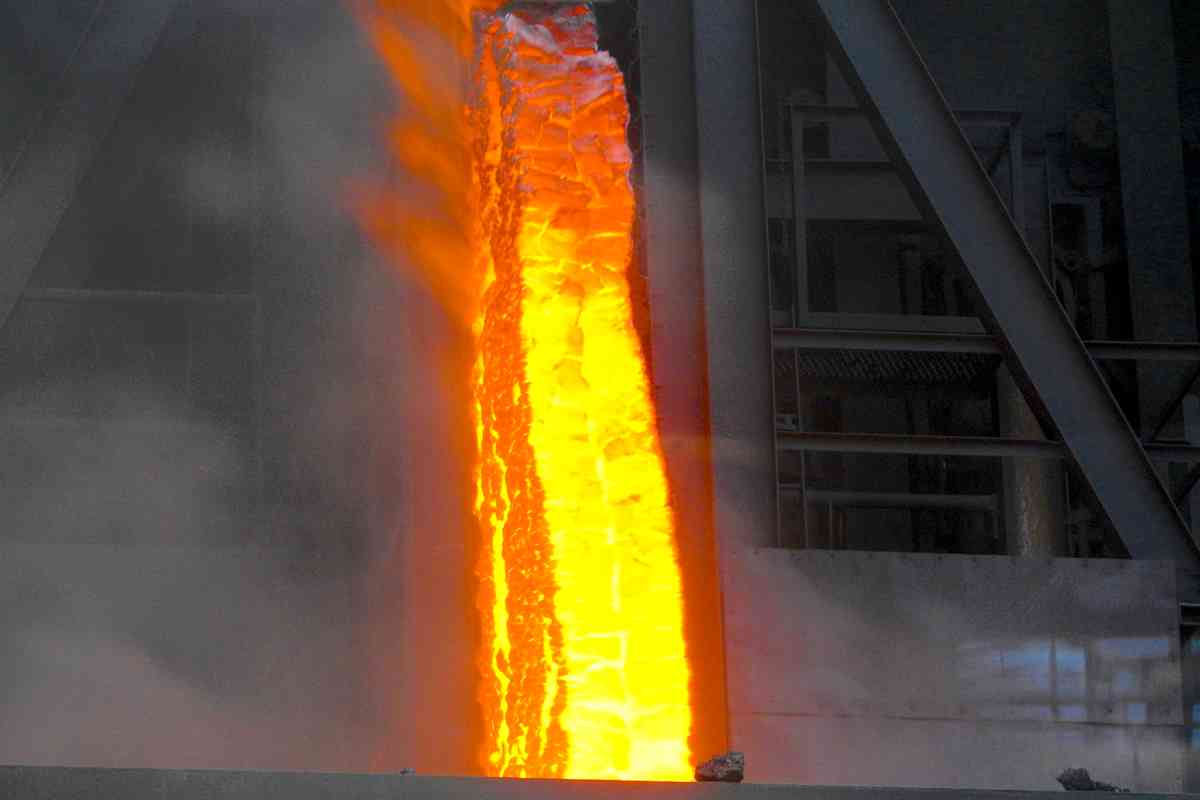
Coal is heated on site to make coke, an important ingredient in the process. The ovens disgorge tons of red-hot coke into special railway carriages.
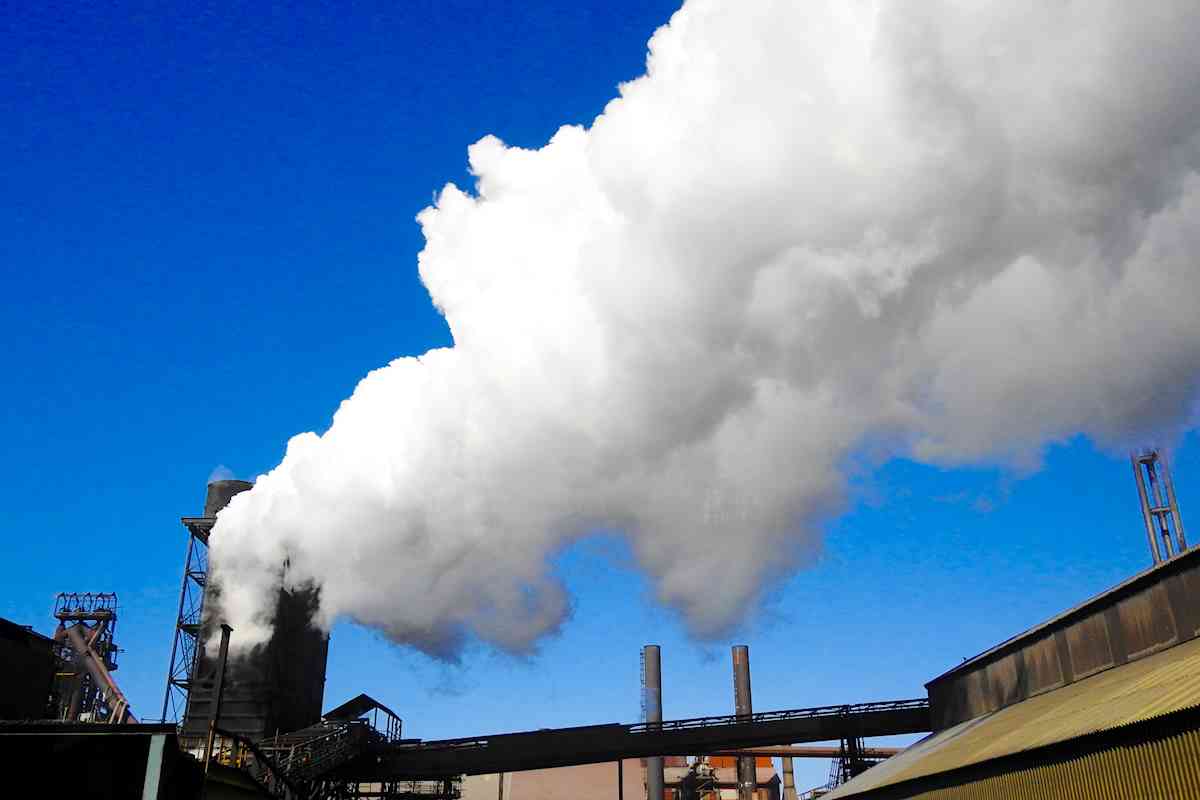
65,000 litres of water is then poured over the coke to cool it, releasing a massive steam cloud into the sky.
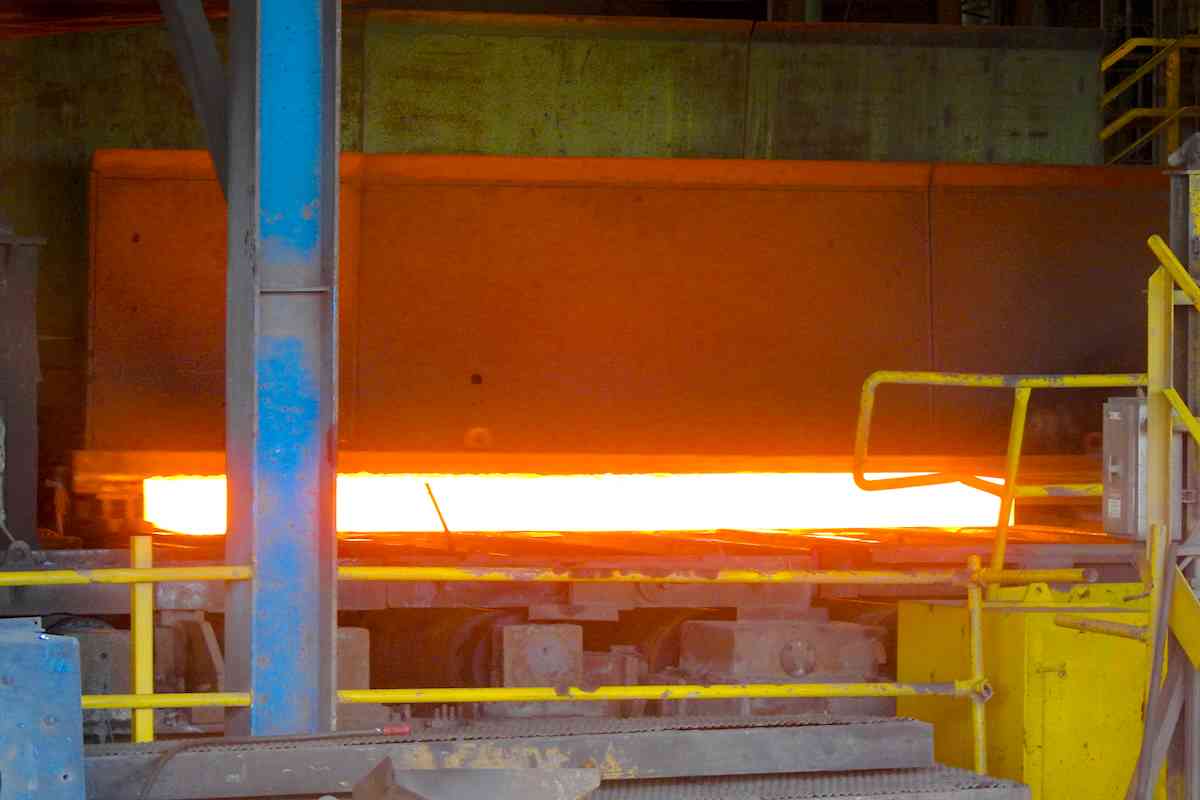
The rolling mills were operating that day and we watched red hot slabs of steel come out of the heating ovens and roll back and forth as they were shaped into large beams.

Moving to the opposite end of the mill, we saw the finished beams moved onto cooling beds, where the impressive heat shimmered from these still hot beams.

